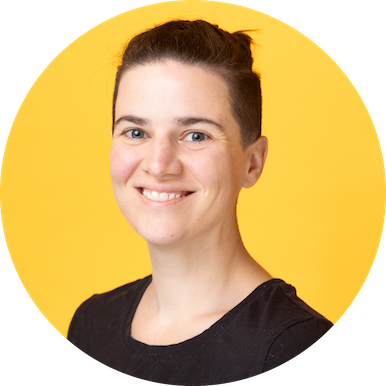While COVID-19 business shutdowns have resulted in unemployment for many industries, the home health care industry is poised for growth.
We’ve asked Brandi Kurtyka, CEO of myCNAjobs, for her insight into the best ways to recruit caregivers and retain the ones you have during the COVID-19 crisis.
Build your bench
Kurtyka believes that much of the fundamentals of caregiver recruitment still apply in a COVID-19 world, but home health care agencies will also need to integrate some new strategies to maintain and grow their teams. To do this, she recommends focusing on building your bench.

“Matching caregiver hours with client needs just got more complicated. Caregivers may require more flexibility with schools closed and managing their own family needs during the pandemic, and you never know when a client will want to increase or decrease hours. Having an army of ready-to-work caregivers is critical to delivering quick service for your existing clients and onboard new ones,” says Kurtyka.
Here are seven tips to help you fill your bench with the right current, almost, and could-be employees.
1. Make sure your agency is a place caregivers want to work.
Before COVID-19, it was common for caregivers to work with several different home health care agencies at one time, picking up assignments where needed. However, we’re seeing more frequently that caregivers are being asked to work for only one agency for the time being, especially if that caregiver is working with COVID-19 patients. Because of this, the labor market has shifted.
Furthermore, while it was previously normal for agencies to be competing for caregivers before COVID-19, now we’re seeing that agencies are competing for experienced caregivers.
“There’s an increased demand for experienced caregivers as there’s an increased demand for trying in-home care services for the first time. We’re seeing many families move loved ones from an assisted living setting into the home. An agency wants to put their best foot forward in delivering someone that is both a good personal match and also seasoned to deliver quality care,” says Kurtyka.
Kurtyka adds: “It’s important to recognize that even though unemployment is high, people in this industry aren’t desperate for a job. You don’t want that to be the culture that’s created for the folks that are recruiting caregivers. I think that’s important.”
You can ensure that your organization is the employer of choice for these exceptional caregivers by first understanding what’s important to them. “Caregivers are looking for employers that are flexible, competitive, and create an environment that is comfortable and safe. At the end of the day, a care worker wants to work for a company and leaders that are warm, kind, and understanding. When you dive into the underlying motivators for why someone does the job, the connection with people is king,” says Kurtyka.
2. Entice current employees to pick up hours.
Maintaining a strong bench begins with ensuring the satisfaction of your current caregivers. You don’t want to find yourself scrambling to replace employees who leave. Your time will always be better spent seeking new employees to grow a team that’s already strong.
Consider taking the following approaches:
- Ensure caregivers are getting the hours they want. Kurtyka says: “Pre-COVID, the number one reason a caregiver took a shift and stayed on board with an agency was hours. This is just so, so important.”
- Invest in your relationships with your caregivers. When you need a caregiver to pick up a shift — even a less desirable shift — they’ll choose to do so if you’ve developed a good relationship with them.
- Incentivize work with hazard pay and last-minute shift bonuses. Kurtyka says that job postings that mention these incentives have been driving more applicant volume than postings that don’t mention them.
- Make current employees leaders. Research from focus groups conducted by myCNAjobs shows that caregivers want to feel like they are part of the solution and that their voices are being heard. Entrusting your employees with leadership pays dividends in strengthening your relationships with them.
- Connect regularly over video. There’s no such thing as too much communication right now — and luckily, we now live in a world in which it’s easy to set up online meetings. The more you can communicate and the more transparency you provide, the more trust you create with your employees. Virtual coffee chats and happy hours can go a long way toward building camaraderie and turning your business into a place people want to work.
3. Get part-time caregivers up to the point of hire.
Many home care agencies are hesitant to bring too many people onto their payroll unless they know they have the hours to give them. Figuring out how many caregivers to hire is not an exact science, but having outstanding caregivers on your bench who are almost-hires will help make your decision easier — and your team stronger — when the time comes for you to hire.
Remember that caregivers tend to have a lot of companies talking to them, so the more you can engage with them, the better. Here are some methods to connect with your almost-employees:
- Understand what they want. If there’s a caregiver you know you want to hire, keep a pulse on what hours they want. Demonstrating that you understand their needs helps build a relationship right out of the gate.
- Invite them to team events. In the era of COVID-19, this can mean video calls and online training webinars. Whatever the case may be, make them feel like they are part of your company even though they haven’t become your employee formally yet.
- Educate them. Providing useful training to add to their skill set shows how much you are willing to invest in them, even though they’re not working for you yet.
- Connect regularly over video. As with your current employees, making sure that you put effort into your relationships with your almost-employees is key to keeping them warm on your bench.
4. Understand the audience you’re recruiting.
It’s important to put yourself in the shoes of a caregiver today. Who are you trying to recruit? What do their lives look like?
Some key statistics you’ll need to understand about caregivers as a demographic:
- 62% of home care workers live in low-income households
- 53% of home care workers rely on public assistance
- $12.27 is the median hourly wage for home care workers in 2018, which has remained stagnant since 2008 (Note: Pay varies greatly by state and local region. To review pay rates in your area, view the myCNAjobs pay database.)
Kurtyka points out: “The life of a caregiver has always really been challenging, and now with the challenges introduced by COVID-19 — such as reduced public transportation and school and child care closures — it’s more challenging. If you can step up as an employer and show how you can help give them the shifts and the cases that are going to work for their lives, you’re going to get the right people.”
You might also consider developing a plan to consistently capture detailed client and caregiver feedback to help inform your long term caregiver recruitment efforts.
5. Refresh your job postings to address current conditions and concerns.
When it comes to attracting applicants, you’ll need to overhaul the content on your job postings to reflect what you’re doing as an organization to meet caregiver needs during the COVID-19 crisis.
“When COVID hit, we saw a dip in the number of jobs a caregiver would apply during each session. It’s still an active job market, but people are more selective about what jobs they are going to apply to. Ensure you overhaul your job content to tell a good story and stand out from your competition,” Kurtyka explains.
It will be important to advertise in your job posting that you are conducting video interviews and you have safety protocols in place.
Kurtyka is seeing that caregivers are being more selective when applying for jobs, so the more timely and relevant your job posting content is, the more likely it is to resonate with these caregivers.
For more tips on how to write an effective job posting, read CareerPlug’s guide here.
6. Focus on the best places to recruit caregivers.
CareerPlug analyzed our hiring data from 2019, and the numbers reveal a clear story about the best places to post jobs for the home health care industry.

As you can see from the data, the major generic job boards dominate this industry as a source of applicant volume (93%) but fall short when it comes to hires (37%). Compare that with custom links, which account for only 2% of applicants but yield a near-equal 36% of hires.
Custom links are the sources to which an employer manually shares a job posting, such as a local university job board or an industry job board, as opposed to the major generic job boards. What this means for home health care recruiters is that they should be focusing their efforts on recruiting from industry-specific job boards like myCNAjobs.
You’ll also find high-quality applicants applying via your company careers page, which resulted in 23% of hires from only 3% of applicants in our study.
7. Create a hiring process that places the right caregivers on your bench.
Attracting caregivers serves the purpose of filling the top of your hiring funnel — but where do you go from there? Even if you have more applicants than you need, without a proven standardized hiring process in place, you can end up spending a lot of your time and resources trying to make a decision that may not even be the right one for your team.
Using an applicant tracking system (ATS) like CareerPlug can equip you with the framework for a great standardized hiring process. It helps in a few major ways:
- Save time on administrative tasks. An ATS serves as a centralized hub that automatically collects and stores everything applicants send you, including resumes, cover letters, samples of work, and any other documents you request from them.
- Pre-qualify candidates effectively. Adding pre-qualifying questions to the application can automatically fast-track applicants who check your most essential boxes (like years of experience, certifications, or desired hours) and gracefully reject those who do not This allows you to focus your time and effort on the best caregivers.
- Evaluate applicants using the same measurable, objective criteria. The use of an ATS discourages hiring on “gut feelings” by providing the hiring process rubric to evaluate all candidates fairly throughout every step of the process.
Having a standardized hiring process allows you to accelerate hiring decisions and make quality hires consistently — two factors that are key to recruiting the exceptional caregivers your home care agency will need throughout the COVID-19 health crisis and beyond.




























